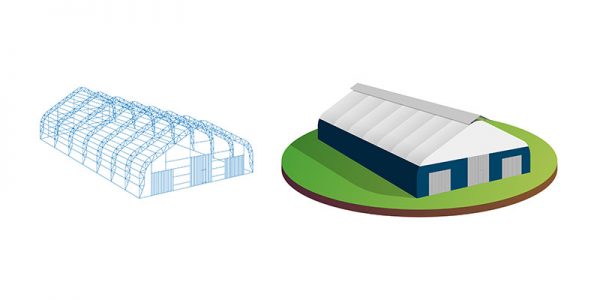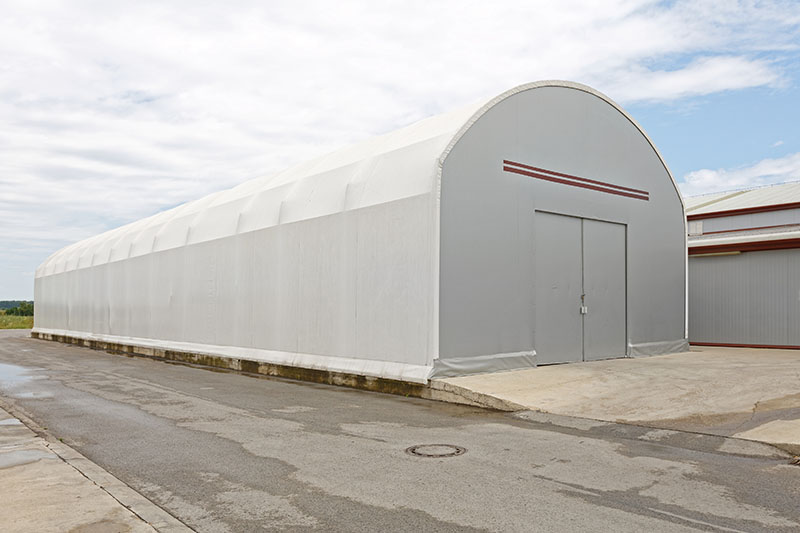Fabric buildings are a popular choice for mining sites and mineral exploration. Since mining sites are often located in remote areas, there’s a need to build structures for workers’ temporary housing, dining facilities, and equipment storage.
While there are many building options for mining sites, fabric structures are more efficient and practical. These types of enclosures can serve various functions in different industries. They provide an easy solution to temporary structural needs.
Here are six reasons why fabric buildings are ideal for mining sites.
1. Portable And Easy To Install
Portability and fast installation are some of the main advantages of fabric structures for mining operations. Fabric buildings commonly use aluminum or galvanized steel frames, making them incredibly lightweight and easy to ship.
Furthermore, fabric structures are far quicker to build than traditional buildings. Since they’re pre-fabricated, the parts can be bolted and assembled on-site within a few days. This method is convenient for faster operations in mining industries.
Since mining sites are often in far-flung locations, shipping traditional construction materials like wood, brick, and mortar can be impractical in terms of time and expenses.
2. Low Construction Costs
Since fabric buildings are faster to build than brick-and-mortar structures, it has lower construction cost. These prefab structures rely on highly detailed structural planning, ensuring fast and efficient installation.
Unlike other structures, fabric buildings require minimal foundation requirements. As soon as the construction site is leveled, you can install fabric structures. This feature makes them ideal for complex terrains on mining sites.
Aside from the low initial cost for construction, fabric buildings’ longevity also helps mining industries maximize their budget for operations.
3. Engineered To Withstand Harsh Climates
Fabric buildings are highly durable despite being lightweight. It’s engineered to withstand strong winds and even extreme heat in some regions. Their structural integrity makes them ideal for mining in harsh climates.
The structure of fabric buildings relies on their frame. They’re often built with galvanized steel for a stronger hold. However, some fabric buildings also use lightweight options like aluminum, especially when shipped and installed in remote areas.
Despite not having concrete foundations, fabric buildings have high surface tensile strength. The tension created by the structural frame and the stretched synthetic fabric helps the structure withstand strong winds and even earthquakes.

4. Available In Various Designs
Another reason fabric buildings are ideal for mining sites is the availability of various designs to serve different functions. Some fabric structures can serve as on-site warehouses, temporary shelters for workers, dining and kitchen areas, and even protective storage for heavy mining equipment.
Most companies providing fabric buildings offer options appropriate for each site. For instance, some regions with less sunlight can benefit from fabric buildings with skylights. This particular feature helps you save electricity on lighting by maximizing natural light during the day.
In addition, some fabric buildings are designed for proper heating, ventilation, and air conditioning (HVAC) systems. These types are perfect for workers’ shelters, dining areas, and other spaces needing strict temperature control.
There are also fabric building designs with flooring, window, and door options. These factors are essential for building weather-appropriate structures and keeping your workers safe.
5. Has Free-Span Architecture
Free-span architecture is standard in warehouses and other buildings with vast floor areas. This type of design keeps the structural integrity of fabric buildings despite not having interior columns that may get in the way of operations.
Fabric buildings are known for their free-span architectural design. This structural plan maximizes the total floor area by eliminating the need for posts in the interior. Various industries that require large warehouses and housing for vehicles and equipment benefit from this type of structure.
Moreover, the absence of columns in fabric buildings prevents accidents that may damage the whole structure. In some cases, traditional buildings with exposed interior columns may require frequent repairs and maintenance inspections.
6. Environment-Friendly
Portable fabric buildings are far more sustainable than brick-and-mortar structures. Due to their design and materials, they have minimal impact on the environment.
The construction method for fabric buildings is less harmful to its surroundings. Since there’s no need for a permanent foundation on site, the carbon footprint of the building is reduced. Also, fabric buildings are durable, lasting for up to 25 years without major repairs.
Moreover, fabric buildings can easily be disassembled and removed after mining operations. There will be no trace of construction waste and disintegrating buildings on site. As they’re easy to install, you can also disassemble them quickly. Depending on the materials’ condition, you can reinstall and reuse them for other purposes, making them a sustainable option.
Conclusion
Using fabric buildings in mining sites is efficient, convenient, and cost-effective. Its countless benefits give mining industries an advantage for safer and more sustainable operations.


